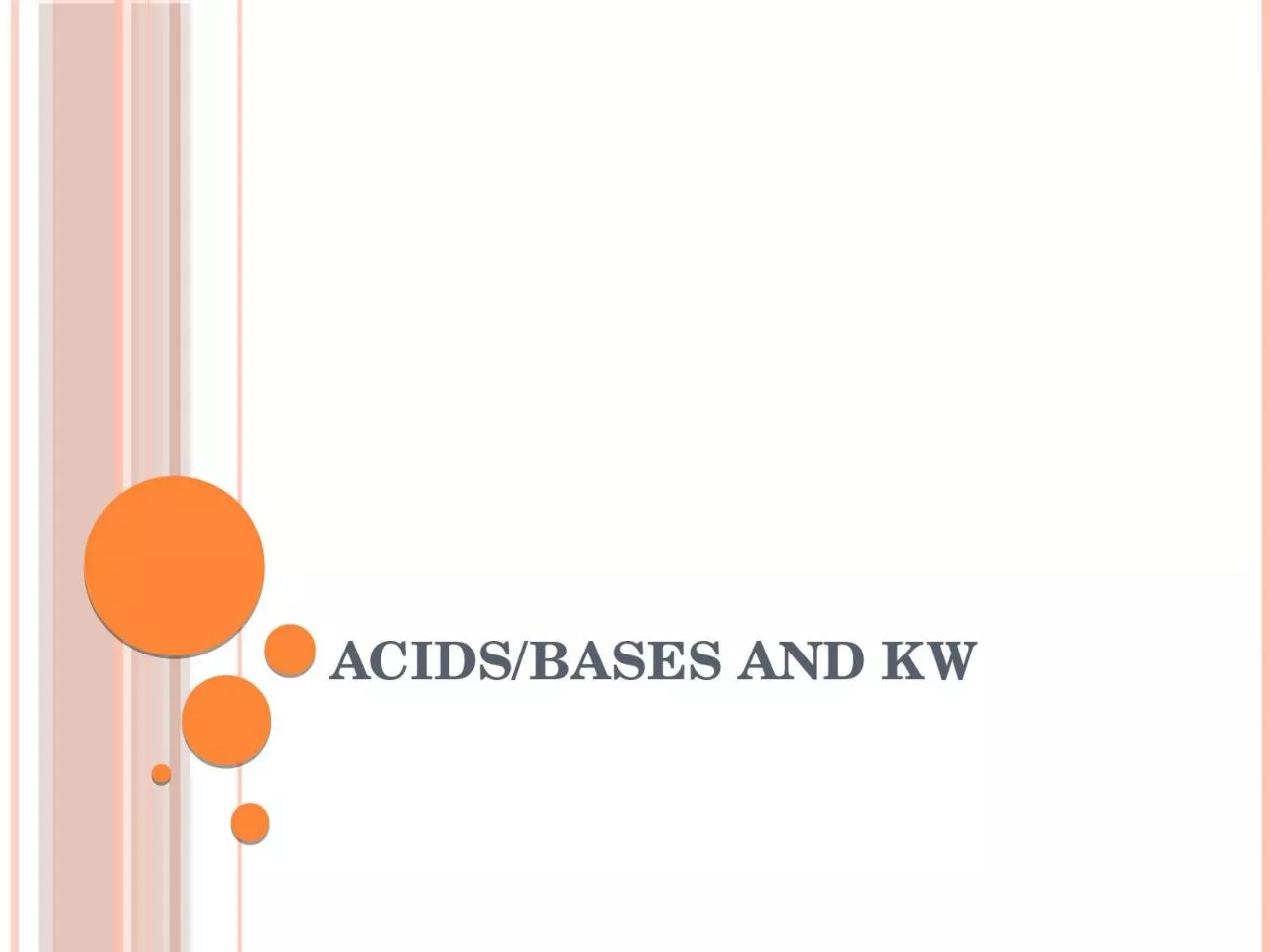

Taken from State University of West Georgia Chemistry Dept Acid and Base Strengths Taken from State University of West Georgia Chemistry Dept Hydronium Ions Hydronium Ions H 5 O 2 Dissociation of Water ID: 1011465
Download Presentation The PPT/PDF document "Acids/Bases and Kw Acid and Base Streng..." is the property of its rightful owner. Permission is granted to download and print the materials on this web site for personal, non-commercial use only, and to display it on your personal computer provided you do not modify the materials and that you retain all copyright notices contained in the materials. By downloading content from our website, you accept the terms of this agreement.
1. Acids/Bases and Kw
2. Acid and Base StrengthsTaken from State University of West Georgia Chemistry Dept.
3. Acid and Base StrengthsTaken from State University of West Georgia Chemistry Dept.
4. Hydronium Ions
5. Hydronium IonsH5O2+
6. Dissociation of WaterH2O + H2O <---> H3O1+ + OH1-The equilibrium expression is products over reactants. K = [H3O1+] [OH1-] / [H2O] [H2O] The molarity for the water is a constant at any specific temperature. SoK [H2O] [H2O] = [H3O1+] [OH1-] The quantity on the right hand side of the equation is formally defined as Kw. The numerical vale for Kw is different at different temperatures. At 25oC Kw = 1.014 x 10-14Kw = K[H2O] [H2O] or Kw = [H3O1+] [OH1-]
7. Dissociation of WaterEquilibrium constants exist then for both acid dissociation and base. (Ka and Kb)The higher the Ka, the stronger the acid and the higher the Kb, the stronger the base. Ka and Kb are related by the previous equation.Kw = KaKb
8. Dissociation of WaterAs Ka gets larger the strength of the acid gets higher, but Kb must fall. Therefore the stronger the acid, the weaker the conjugate base.
9. Dissociation of WaterIt can now be said that the conjugate base (acid) of a weak acid (base) is a weak base (acid) and the conjugate base (acid) of a strong acid (base) is a worthless base (acid).
10. Dissociation of WaterThe strength of an acid/base is usually given as a pKa value. As pKa is inversely related to Ka, the higher the Ka (the stronger the acid), the lower the pKa value. The same is true of bases.
11. Calculating pH-log [H+]Power of Hydronium (Hydrogen) P[OH-] = - log [OH]
12. The pH Scale
13.
14. pH in Solutions of Strong Acids and Strong BasesStrong acids Certain acids are known as strong acids. These are acids that fully ionize when placed in water: HA + H2O A- + H3O+Goes to completion and thus Ka = [A-][H3O+]/[HA] = infinitySome common strong acids are: HCl, hydrochloric acid HBr, hyrdobromic acid HI, hydroiodic acid H2SO4, sulfuric acid HNO3, nitric acid HClO4, perchloric acid
15. pH in Solutions of Strong Acids and Strong BasesStrong Bases Certain bases are known as strong bases. These are bases that fully ionize when placed in water. Some common strong bases are: LiOH, lithium hydroxide NaOH, sodium hydroxide KOH, potassium hydroxide Ca(OH)2, calcium hydroxide Sr(OH)2, strontium hydroxide Ba(OH)2, barium hydroxide Alkaline earth oxides.Lime (CaO)